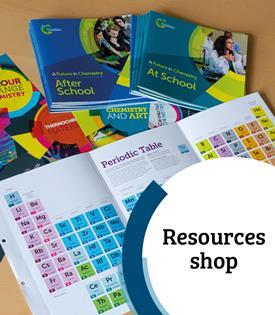All Class experiment articles – Page 7
-
 Class experiment
Class experimentAn alternative to using compressed gas cylinders
Getting gas under pressure allows exciting demonstrations such as igniting balloons filled with hydrogen gas. Includes kit list and safety instructions.
-
 Class experiment
Class experimentMaking nylon: the ‘nylon rope trick’
The ‘nylon rope trick’ is a classic of chemistry classrooms, by mixing decanedioyl dichloride and in cyclohexane you can create a solution that will form nylon strings when floated on an aqueous solution of 1,6-diaminohexane. Kit list and safety instructions included.
-
 Class experiment
Class experimentFlame tests (the wooden splint method)
Find a new method to perform flame tests using wooden splints soaked in chlorides. Includes kit list and safety instructions.
-
 Class experiment
Class experimentNeutralisation circles
Support students to explore neutralisation circles in this experiment that can be performed with common chemistry classroom equipment. Kit list and safety instructions included.
-
 Class experiment
Class experimentThe methane rocket
Ignite methane with oxygen in a bottle, and amaze students with this methane rocket. Contains kit list and safety instructions.
-
 Class experiment
Class experimentExtracting limonene from oranges
Limonene is found in oranges, and now your classroom. Create a distillation apparatus and support students to make their own plant oils. Includes kit list and safety instructions.
-
 Class experiment
Class experimentThe effect of concentration on reaction rate
Students react sodium thiosulfate solution is reacted with acid – a sulfur precipitate forms. The time taken for a certain amount of sulfur to form can be used to indicate the rate of the reaction. Contains kit list and safety instructions.
-
 Class experiment
Class experimentDiffusion of gases – a safer alternative to bromine
Diffusing gases can be a tricky thing to do, but by creating an alternative to bromine, you can make a safer classroom alternative for this process. Kit list and safety instructions included.
-
 Class experiment
Class experimentMaking silicon and silanes from sand
Create silicon in your classroom using just sand and magnesium. This exothermic practical will show learners the nuances of heat based reactions and how to perform them safely. Kit list and safety instructions included.
-
 Class experiment
Class experimentReduction of copper(II) oxide by hydrogen
Determine the formula of copper(II) oxide by reducing it using hydrogen or methane, in one of three methods available to you in this practical. Includes kit list and safety instructions.
-
 Class experiment
Class experimentTesting for negative ions
Guide students into testing for negative ions with this practical. Students note their own observations and use their knowledge to discover more. Includes kit list and safety instructions.
-
 Class experiment
Class experimentCross-linking polymers – alginate worms
With a collection of equipment easy to find in your classroom, learners can form alginate polymer ‘worms’ and explore cross-linking polymers
-
 Class experiment
Class experimentEnergy content in foods
Try this class experiment to investigate how much energy different foods contain. Includes kit list and safety instructions.
-
 Class experiment
Class experimentExtracting iron from breakfast cereal
Try this class practical or demonstration to extract food-grade iron from breakfast cereals using neodymium magnets. Includes kit list and safety instructions.
-
 Class experiment
Class experimentDetecting starch in food on a microscale
Test different foodstuffs for the presence of starch using iodine in this microscale class practical. Includes kit list and safety instructions.
-
 Class experiment
Class experimentUsing indigestion tablets to neutralise an acid | 14-18 years
Investigate and measure the neutralising effect of indigestion tablets (antacids) on hydrochloric acid in this class practical. Includes kit list and safety instructions.
-
 Class experiment
Class experimentChemistry of dentistry
Learn about the role of chemistry in dentistry. Includes kit list, safety instructions and suggested session timings
-
 Class experiment
Class experimentThe preparation and properties of oxygen
Produce a potassium manganate(VII) reaction using a test tube, Bunsen burner, and scientific inquisition to detect the presence of oxygen. Includes kit list and safety instructions.
-
 Class experiment
Class experimentExperiments with particles
Explore physical states, and how material interact with three practicals. Students use common classroom items to explore, and then note their findings. Includes kit list and safety instructions.
-
 Class experiment
Class experimentSherbet and popping candy: edible experiments
What makes sherbet fizz, and what makes popping candy pop? Discover the importance of chemistry in everyday eating experiences with this edible experiment











